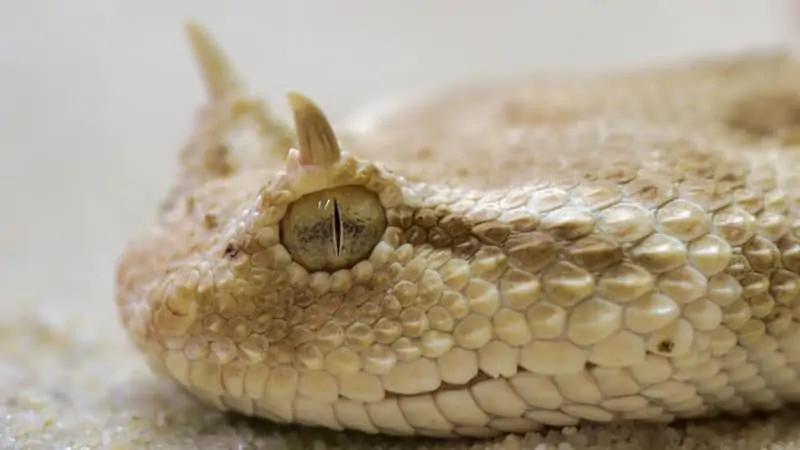A pillowcase is a perfectly fine way to safely transport a snake. It’s breathable and provides a calm environment for the snake. However, you can’t keep the snake inside a pillowcase indefinitely.
Depending on the snake species and other prevailing conditions, you can keep most snakes inside a pillowcase for up to three days. Younger snakes may need some fresh drinking water more frequently. Smaller snakes are often more active and may need to be released sooner than big-sized snakes.
Snakes don’t need as much oxygen as other animals. Additionally, they don’t need to feed or drink water as often. A pillowcase lets in enough air and is a dark place where the snake can feel secure.
Can I Put My Snake in A Pillowcase?

Since a pillowcase allows in enough air, it is okay to transport your snake inside one. Most pillowcases are opaque, preventing the snake from observing the activity around them and this has a calming effect.
A standard pillowcase will comfortably contain a snake up to five feet long. For bigger snakes, use a bigger bag. For smaller snakes, you can use a sock or small sack.
If you decide to transport a snake inside a pillowcase, place some pieces of crunched up newspapers to help absorb any fluids the snake might release.
Snakes are adept escape artists, so ensure you tie a tight overhand knot to secure it. Also, use two strings or zip ties to keep the snake safely inside.
To transport a snake inside a pillowcase:
- Pick an appropriate-sized pillowcase. You can use a duvet cover for a bigger snake.
- Bunch up a few newspapers and set them inside the pillowcase at the bottom.
- Add in your snake and try to squeeze it into a corner of the pillowcase. Place the snake in one smooth move as the snake will try to escape.
- Stretch out the pillowcase and gently push the snake to one corner. Don’t give the snake too much wiggle space. Also, don’t squeeze it in too tight. You want the snake to be calm and comfortable.
- Tie at least one knot, then follow up with one zip tie on each side of the knot. Make sure you don’t have the snake’s tail in the knot or ties.
- If the trip will be longer than 30 minutes, then place the pillowcase inside a cooler box. You need the insulation to keep temperatures stable at around
How Long Can a Snake Stay in A Pillowcase During Travel?
Most snakes can be transported in a pillowcase for about three days without problem. Apart from providing comfort to the snake, a pillowcase doesn’t offer any hard surfaces. Hence the snake doesn’t have a pivot point or leverage to lash out.
The pillowcase also keeps the snake from squirming around and protects you from any snake bites. To make the snake’s time inside the pillowcase even more comfortable while enhancing safety, you should also:
- Transport the snake in the pillowcase placed inside a travel carrier.
- Cover the travel carrier with blankets to keep the temperature stable and block out external stimuli such as flashing lights, sounds, and scents.
- Add heaters to keep the container warm.
- Use a thermometer to monitor the temperature.
Can Snakes Breathe in A Pillowcase?

Like most reptiles, snakes need far less oxygen compared to mammals. Thus, a snake can easily breathe without problem while inside a pillowcase.
To test whether your pillowcase material will be breathable for the snake, fold the material into four and hold it against your nose. If you can pull in a few breaths through the multiple layers, then the snake can also breathe through one layer when inside.
Breathability is important, but so is securing the snake from self-harm. A pillowcase isn’t too restrictive yet at the same time doesn’t allow much space for the snake to hurt itself. To reduce risks of injury, remove any loose items from around the snake. Also, remove any sharp objects which may pierce through the pillowcase and harm the snake.
Once you have the snake inside a pillowcase, place it inside a transport carrier. Line the bottom of the carrier with grippy material to [prevent your snake from slipping across the bottom. Blankets work best during cold weather while newspapers work better during hot weather. If your snake requires a humid environment, use a wet blanket or towel.
Placing the snake in a pillowcase and then inside a carrier can help insulate the snake from the stress of traveling. For better effect, cover the carrier with blankets. The outer covering will work to further insulate the snake from temperature changes.
Additionally, the blankets will protect the snake from zooming lights and the smells of the world you’re passing through. The blankets also protect the snake from noises coming from the outside. Snakes can be easily startled and stressed when they can’t move away from perceived enemies.
To help your snake acclimatize better, get it used to the pillowcase and carrier from a few weeks before the journey. Start your snake with short trips lasting less than an hour. Gradually make your trips longer. Snakes are highly adaptive and if the environment is kept stable the snake will quickly get used to the pillowcase and travel carrier.
Depending on the length of the journey and species of your snake, keep the carrier temperature as stable as possible. You want your snake’s carrier to remain at the same temperature as the tank at home. If you’re traveling long distance:
- Use heat packs or hand warmers to provide heat for long hours.
- Use a hot water bottle to keep the snake warm. Take extra care so the hot water bottle doesn’t come into direct contact with the snake’s skin.
- Once you arrive at your destination, get the snake out of the transport carrier and the pillowcase immediately. Leave the snake in the dark inside it’s terrarium or tank. Provide water immediately but only provide food after a couple of hours of rest.

